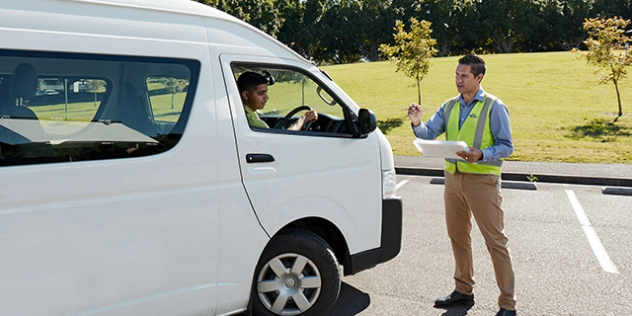
'Grey fleet' is used to describe private vehicles that are used by employees for work purposes: It’s something many large businesses and volunteer-based organisations are grappling with at the moment because of the potential liability associated with it. Many businesses happily use grey fleets to their advantage without being aware of the risks.
According to the Work Health and Safety ACT 2011, an employer needs to provide a workplace that is safe and without risks. This includes anywhere the work task is performed. So, if someone performs a task (paid or unpaid) in a car/truck/van for your business, it becomes a workplace and needs to be safe.
The definition of a safe workplace is not prescribed in the legislation. Grey vehicles fall into a bit of a grey area and employers need to do everything ‘reasonable’ to make them safe.
With cars and drivers, there are a number of obvious places to start.
There’s no minimum distance or frequency of use to qualify a car as a grey fleet vehicle, so any employee vehicle that is used for work purposes needs to be safe and licensed.

This is the biggest issue organisations face because employees don’t always tell their bosses when they use their car for work. The best way to start is to have a chat with your team and implement a grey fleet policy.
Once you have a policy in place that explains the grey fleet, take a look at your payroll records to identify staff that have been claiming a travel allowance. Then, you can ask employees if they’re making a claim for vehicles expenses on their tax return.
With this information, you’ll be able to easily see the roles and job functions within your business that need to use a car for work purposes, which will help you capture all of the grey fleet vehicles.
Or, you can do it the other way around and set the terms of use for grey fleet vehicles and claiming travel expense, and require your employees to register their car with your business as a grey fleet vehicle before making any claims.
There are several alternatives for businesses other than using private vehicles.
Technology and the emerging trend of mobility are changing the way people get from A to B. In Europe, congestion taxes, emissions reporting and traffic delays are forcing companies to consider different modes of transport for employees.
Here in Australia, pool fleets have become popular again with businesses. This is because technology has made it easier to manage online booking systems, electronic key cabinets and digital record keeping. Staff, or volunteers, can access safe vehicles to perform work tasks and avoid using private vehicles.
Another popular alternative is novated leasing (also called salary packaging). It’s easy to offer to all employees and provides businesses with some confidence that the vehicles will be newer and well maintained when used occasionally for business use.
Whichever way you decide to go, it is something worth considering to ensure you’re following the laws on grey vehicles and not putting yourself and your business at risk.